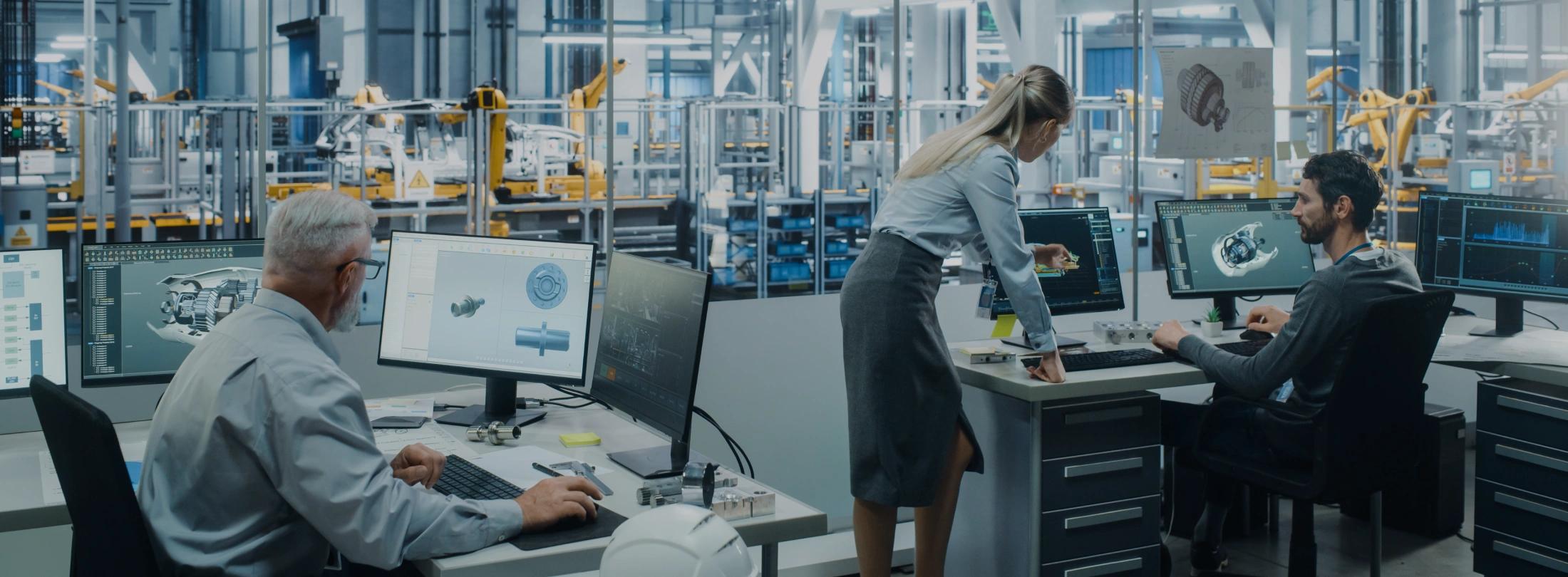
Transforming Industry Through Digital Intelligence
Digital optimization of industrial processes and logistics focuses on enhancing efficiency, transparency, and adaptability across production and supply chains. By leveraging advanced analytics, automation, and integrated digital platforms, organizations can monitor, manage, and refine operations in real time. This approach transforms traditional industrial systems into interconnected networks capable of responding to changing demands, reducing resource waste, and maintaining consistent operational performance.
The focus is on creating a coherent framework where data, technology, and strategy converge to ensure that industrial and logistical systems operate seamlessly and sustainably.
Data-Driven Operational Efficiency
At the core of digital optimization lies data. Industrial processes generate large volumes of information from machinery, production lines, and supply chains. By analyzing this data, organizations gain insights into system performance, operational bottlenecks, and resource utilization.
Digital platforms allow managers to track workflows, predict maintenance needs, and optimize energy and material use. Real-time visibility into processes enables proactive adjustments, ensuring that operations maintain efficiency and reduce unnecessary costs.
Integration Across Supply Chains
Optimizing logistics requires the integration of various systems, including warehousing, transportation, procurement, and distribution networks. Digital platforms enable seamless communication between these elements, allowing data to flow across the supply chain.
This integration ensures that production schedules align with material availability, delivery times are optimized, and inventory is managed intelligently. By connecting suppliers, manufacturers, and distributors digitally, organizations can improve coordination and enhance responsiveness to market demands.
Predictive Analytics for Proactive Management
Predictive analytics play a central role in industrial and logistical optimization. By examining historical and real-time data, algorithms can forecast equipment failures, production delays, and supply chain disruptions.
This proactive approach allows managers to schedule maintenance, reroute deliveries, or adjust production plans before issues escalate. Predictive intelligence reduces downtime, minimizes operational disruptions, and enhances overall system resilience.
Automation and Smart Manufacturing
Automation enhances both production and logistics by enabling repetitive and complex tasks to be executed with precision. Smart manufacturing systems incorporate robotics, IoT sensors, and AI-driven decision-making to optimize workflows and reduce human error.
In logistics, automated systems support inventory tracking, route optimization, and warehouse management. Together, these technologies create a dynamic, self-regulating ecosystem that maintains consistent output while adapting to fluctuations in demand.
Resource Optimization and Sustainability
Efficient resource use is a key principle of digital industrial management. Monitoring energy consumption, material usage, and emissions allows organizations to minimize waste and reduce environmental impact.
Digital platforms support sustainable practices by providing actionable insights into energy efficiency, recycling opportunities, and supply chain sustainability. Aligning operational efficiency with environmental responsibility ensures long-term viability and compliance with regulatory standards.
Enhanced Monitoring and Visualization
Visualization tools such as dashboards, KPI trackers, and interactive charts allow managers to monitor industrial and logistics operations at a glance. These platforms provide real-time feedback, highlighting areas that require attention and tracking performance metrics across production and transportation networks.
By providing clear, accessible information, organizations can make informed decisions, coordinate teams effectively, and maintain transparency across departments and partners.
Cybersecurity and System Reliability
The integration of digital technologies introduces the need for robust cybersecurity measures. Industrial and logistical systems must be protected against data breaches, cyberattacks, and unauthorized access.
By implementing secure protocols, encrypted communication, and continuous monitoring, organizations can ensure operational continuity while safeguarding sensitive information. Reliability and security are fundamental to maintaining trust and efficiency in a digitalized industrial environment.
Collaboration and Cross-Functional Coordination
Digital optimization fosters collaboration across departments, sites, and external partners. Shared platforms enable teams to coordinate production schedules, inventory management, and transportation planning.
This collaboration reduces miscommunication, streamlines workflows, and promotes alignment between strategic objectives and operational execution. Cross-functional integration strengthens the entire industrial and logistics ecosystem.
Continuous Improvement and Adaptability
Digital systems are designed to evolve over time. By analyzing performance data and incorporating feedback loops, organizations can continuously refine processes, implement new technologies, and adjust to market changes.
This adaptive approach ensures that industrial operations and logistics networks remain efficient, resilient, and responsive to both short-term disruptions and long-term trends.
Conclusion: A Smarter Industrial Ecosystem
Digital optimization of industrial processes and logistics transforms traditional operations into intelligent, adaptive networks. By combining data analytics, automation, predictive insights, and integrated platforms, organizations can improve efficiency, sustainability, and coordination across all aspects of production and supply.
This approach ensures that industrial systems are capable of evolving with technological advancements and market demands, creating a reliable, efficient, and forward-looking operational environment.